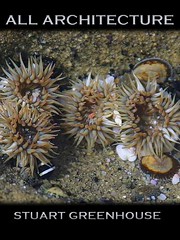Friday, July 23, 2004
Last night I spent some time with the Dao De Ching. In the version I have, in addition to a straight translation (which is ok, but because the translator is primarily a translator of Sanskrit, it has a vedantic ‘taste’ to it) there is an ideogram-by-ideogram translation in the back. For each character, he gives a bunch of variant meanings, and for some the pictorial origin. So if you are patient, you can puzzle out different syntaxes and sentences, most of which end up supporting each other, not negating. Working through passages of Finnegans Wake was good practice for this, I think.
So here is what I think of the first ‘sentence.’ The characters are: “Dao,” which is derived from a head and a foot (i.e. the famous path, “Way”); “k’o,” which is derived from bear, or any powerful animal, and means able, having the power to; “Dao” again; “Fei,” which is derived from the two wings of a bird, and represents the “abstract notion of opposition, contradiction.” The commentary further says “Although the two wings oppose each other, they are both needed in order for the bird to fly.” This basic concept is the heart of Daoism (the philosophy, that is; I know little of the religion which goes by the same name but is actually different); “Ch’ang,” which is derived from a house-roof and a banner/flag flying, and means stability, elevated, authority, imperial, even eternal. The commentary further says “A flag, which is constantly moving in the wind, can also be seen as representing the eternal movement of the universe or the eternal law that says that all things change.” This is a very important idea throughout also, for emptiness (‘wu’) is seen as a great virtue, an accommodating and nonjudgemental emptiness such as is manifest in a flag’s acceding to the wind, or in the emptiness in a room which gives that room its definition; and finally one more “Dao.” So, trying to understand a little more deeply than the standard translations, which tend to be some variant on “The way that can be followed is not the Way,” I puzzled. From what I’ve learned meditating (which is experiential, not book-knowledge), I came up with a number of variants. The one I’m holding on to just now is:
“The way, which is the powerful-bodied, opposes, as one bird’s-wing does the other, the long-stable-structured way.”
or even
“The way is yin opposing yang,” or"The way is yin moving with yang."
at its simplest. This is also Blake’s energy and order. It’s also Yeats’ Byzantium poems, and his putting himself unbodied into a stable construct, a hammered art of lovely variation.
This first sentence is so beautiful in its various meanings. What I find striking is how understanding the characters as physical energies brings the meanings to an entirely actual level—that body-energy (bear—grrr) is the opposite complementary to establishment-energy (don’t forget to vacuum, dear)—that understanding the interplay between the physical and spiritual (and by this word I also mean emotional, intellectual, and social) energies is a sublime. And beyond even the specifics, to understand that any thing which is extreme is confirmed by its opposites. Isn’t this even Herbert, “That the fall may further thy flight in me?”
In light of this thought, I want to modify my simplistic Ishmael=good, Ahab=bad stance of earlier. Since all the “magic” of Moby-Dick is brought on by a domination of the theme that a man’s metaphysic is what creates his universe, Ahab in his extremity can be seen as the creator of Moby Dick. And, without Moby Dick, Ishmael never has the awe to reach the sublime he does. Ahab knows this at the end, and he would know, as I also should, that that which makes him ridiculous is not only a trait we all have, but is that which makes Ishmael sublime, escape it as he does, riding the contradictions of life and death to survival.
So here is what I think of the first ‘sentence.’ The characters are: “Dao,” which is derived from a head and a foot (i.e. the famous path, “Way”); “k’o,” which is derived from bear, or any powerful animal, and means able, having the power to; “Dao” again; “Fei,” which is derived from the two wings of a bird, and represents the “abstract notion of opposition, contradiction.” The commentary further says “Although the two wings oppose each other, they are both needed in order for the bird to fly.” This basic concept is the heart of Daoism (the philosophy, that is; I know little of the religion which goes by the same name but is actually different); “Ch’ang,” which is derived from a house-roof and a banner/flag flying, and means stability, elevated, authority, imperial, even eternal. The commentary further says “A flag, which is constantly moving in the wind, can also be seen as representing the eternal movement of the universe or the eternal law that says that all things change.” This is a very important idea throughout also, for emptiness (‘wu’) is seen as a great virtue, an accommodating and nonjudgemental emptiness such as is manifest in a flag’s acceding to the wind, or in the emptiness in a room which gives that room its definition; and finally one more “Dao.” So, trying to understand a little more deeply than the standard translations, which tend to be some variant on “The way that can be followed is not the Way,” I puzzled. From what I’ve learned meditating (which is experiential, not book-knowledge), I came up with a number of variants. The one I’m holding on to just now is:
“The way, which is the powerful-bodied, opposes, as one bird’s-wing does the other, the long-stable-structured way.”
or even
“The way is yin opposing yang,” or"The way is yin moving with yang."
at its simplest. This is also Blake’s energy and order. It’s also Yeats’ Byzantium poems, and his putting himself unbodied into a stable construct, a hammered art of lovely variation.
This first sentence is so beautiful in its various meanings. What I find striking is how understanding the characters as physical energies brings the meanings to an entirely actual level—that body-energy (bear—grrr) is the opposite complementary to establishment-energy (don’t forget to vacuum, dear)—that understanding the interplay between the physical and spiritual (and by this word I also mean emotional, intellectual, and social) energies is a sublime. And beyond even the specifics, to understand that any thing which is extreme is confirmed by its opposites. Isn’t this even Herbert, “That the fall may further thy flight in me?”
In light of this thought, I want to modify my simplistic Ishmael=good, Ahab=bad stance of earlier. Since all the “magic” of Moby-Dick is brought on by a domination of the theme that a man’s metaphysic is what creates his universe, Ahab in his extremity can be seen as the creator of Moby Dick. And, without Moby Dick, Ishmael never has the awe to reach the sublime he does. Ahab knows this at the end, and he would know, as I also should, that that which makes him ridiculous is not only a trait we all have, but is that which makes Ishmael sublime, escape it as he does, riding the contradictions of life and death to survival.



